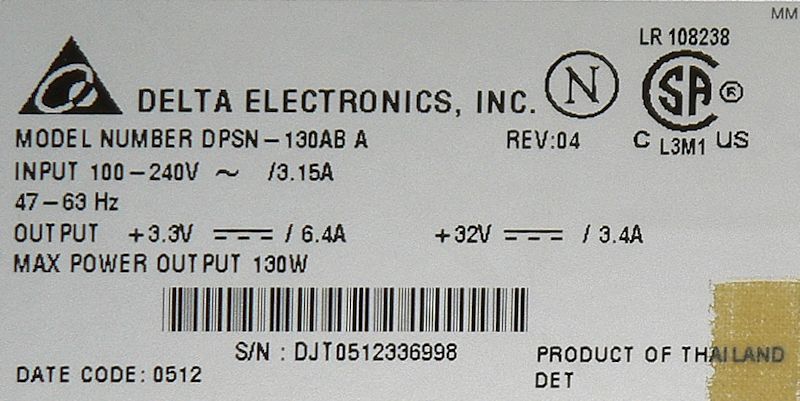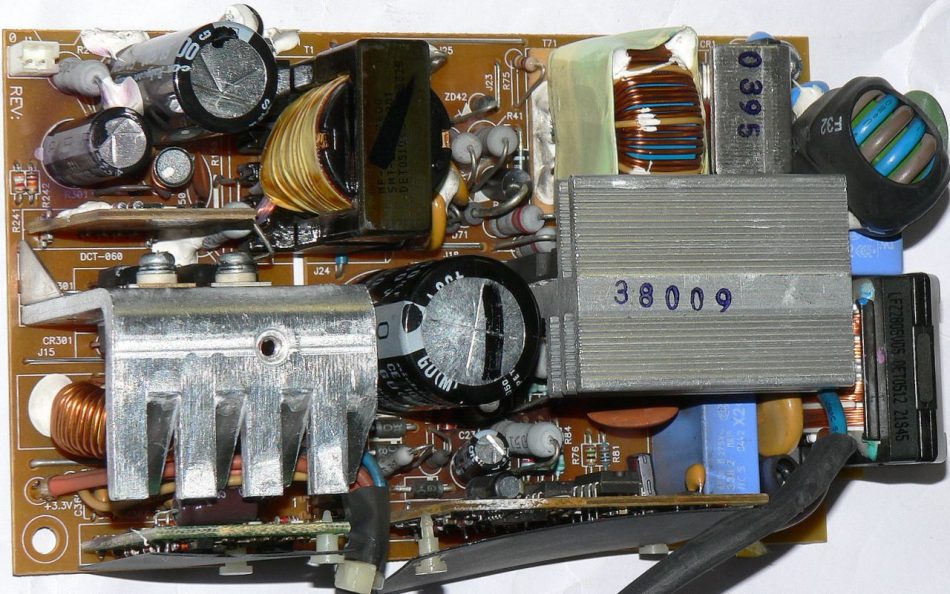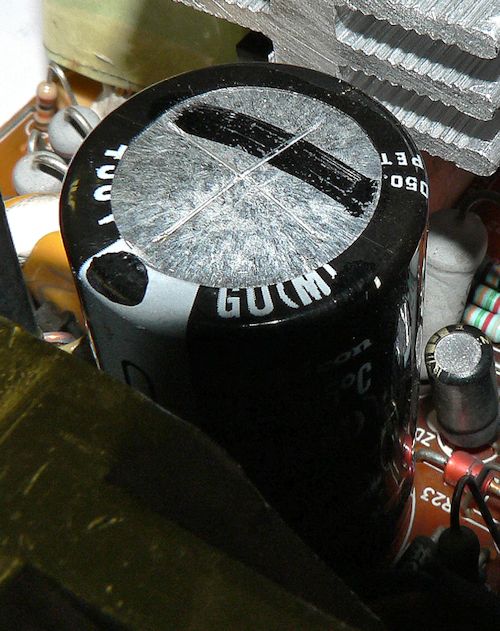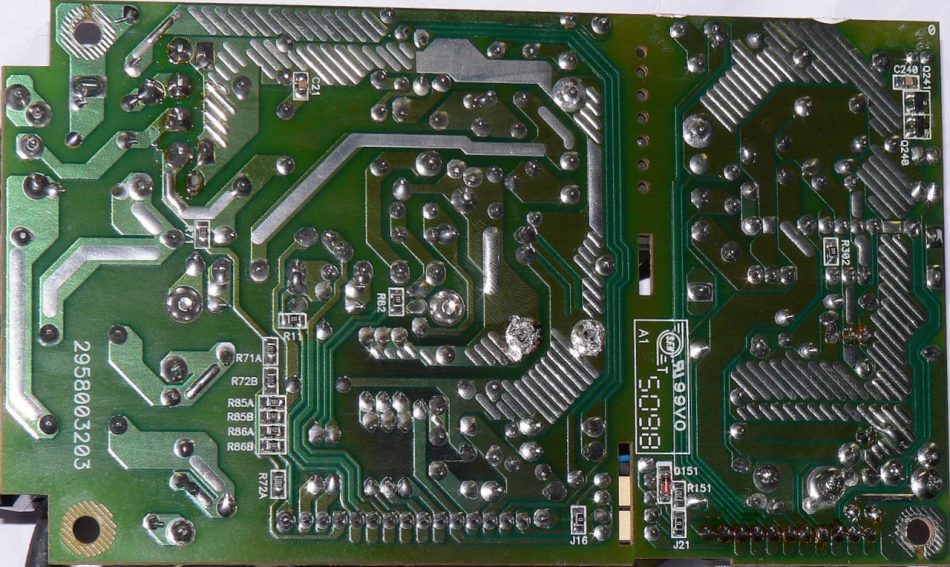Introduction, the PSU
After a long string of PSU reviews, we are once again going to be taking a look at some broken electronic devices (Unfortunately, I had a lot of these devices sitting around but ultimately lost them). This time it will be the Hewlett-Packard DesignJet 110plus printer, which is often referred to as a plotter, but it is really „just“ a wide-format inkjet printer. It comes with parallel and USB ports, has a maximum printing resolution of 1200×600 DPI, and also has 64 MB of internal memory. The printing speed varies depending on the size and quality, and it can range from about 6 seconds to well over a minute.
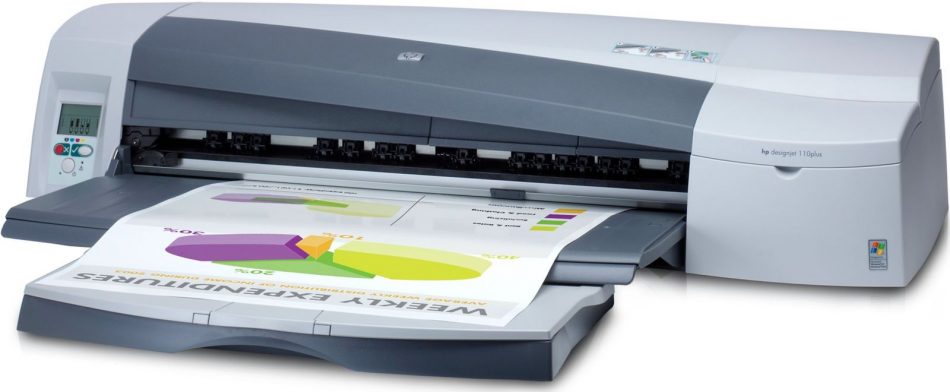 This particular device has seen use for every working day for almost a decade, being turned on most of the time. When I received it, it would no longer power on properly anymore, and the printer lights would just blinking (at best) and I could hear rattling and whistling from the inside. My first bet was the power supply which is buried quite deeply inside the printer. I do not have images of the disassembly procedure, but it’s not that complicated, and it just takes a while. You have to remove the lid, the whole backside cover, then few more little things, and then you finally get to the PSU. It is located on the right side, behind the parking space for the printing heads.
This particular device has seen use for every working day for almost a decade, being turned on most of the time. When I received it, it would no longer power on properly anymore, and the printer lights would just blinking (at best) and I could hear rattling and whistling from the inside. My first bet was the power supply which is buried quite deeply inside the printer. I do not have images of the disassembly procedure, but it’s not that complicated, and it just takes a while. You have to remove the lid, the whole backside cover, then few more little things, and then you finally get to the PSU. It is located on the right side, behind the parking space for the printing heads.
Assuming you manage to disasseble it properly, you get to the PSU, and as you can see, it’s the Delta Electronics model DPSN-130AB. It is a constantly-running 130W power supply with two rails (+3.3 V and +32 V). It is equipped with a fan, but a rather small one. And as it is buried deep in the printer (which is constructed mostly from plastic), the whole power supply gets quite warm.
The problem is immediately visible. The whole board is discolored because of the heat, and the input capacitor, a Nichicon GU 100/450, is bulging. All the capacitors in this unit are Japanese, and the GU is rated for 3000 hours at 105 °C at maximum ripple.
However, running 24/7 under such high temperatures with electronic loads that spanned the length of about a decade made even this one fail in the end. There is also an active PFC circuit in the DPSN-130AB which boosts the input voltage up to 417 V (actual measured voltage). That also increased the stress a bit and made replacement more complicated… As I usually only stock 400V caps, I had to get something else to replace this 450 V part. In the end I had to purchase a more expensive KXJ 120/450. I also acquired some samples of KXG 100/450, but those arrived later.
You can clearly see that because of the failing bulk capacitor, some of the primary components have been subject to greater stresses than normal. That resulted into even more heat being generated which discolored the board in its vicinity, and in turn hastened the bulk capacitor’s demise.
Pages: 1 2
